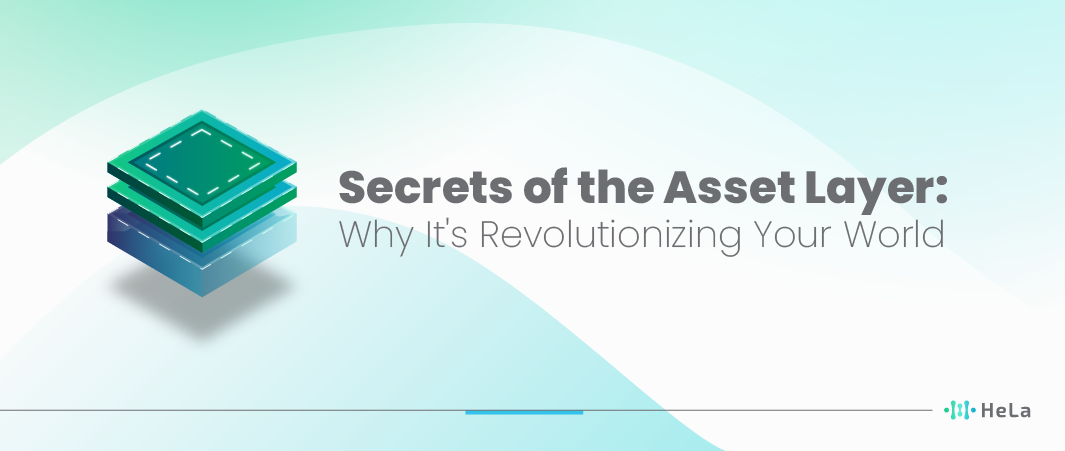In today’s rapidly evolving technological landscape, the term “asset layer” is gaining increasing prominence. But what exactly does it mean? The asset layer serves as a foundational element in digital asset management, acting as a bridge between raw data and actionable insights. It is the layer that allows for the efficient organization, storage, and retrieval of digital assets, thereby streamlining operations and enhancing productivity.
Understanding the asset layer is not just for tech-savvy individuals or IT professionals; it’s crucial for anyone involved in the management of digital assets. Whether you are a business owner, a digital marketer, or an end-user, grasping the concept of the asset layer can offer you a competitive edge. In this comprehensive article, we will delve deep into the asset layer, exploring its significance, function, and much more.
What is the Asset Layer?

The Asset layer is like the middle ground in the world of digital asset management systems (DAMS). Picture it as a bridge connecting two important places: the data layer and the application layer. So, what does this middle ground do? Well, it’s where all your digital stuff lives – your images, videos, documents, and other files. Think of it as a well-organized digital library where you can easily find and work with your files.
Also Read: Layer 1: Definition and How does it work?
Imagine you’re on your computer, searching for a specific image or document. Instead of rummaging through a messy pile of files, the Asset layer steps in to keep everything neat and tidy. It’s like having a digital librarian that helps you quickly find what you need and even makes it easier to edit or share those files. So, next time you’re navigating through your digital world, remember the Asset layer – it’s the unsung hero making your digital life a whole lot smoother.
The Significance of the Asset Layer

The asset layer is not just a storage space; it’s a dynamic environment that adds value to digital assets. Here are some key reasons why the asset layer is significant:
Efficiency
This tool makes it easier to get to and handle your digital stuff, which means you can save a bunch of time and effort. It’s like having a shortcut to all your digital things, making them super convenient to use and organize. So, you won’t have to spend ages searching for files or figuring out where you put them – this tool takes care of all that hassle for you, making your digital life a whole lot simpler.
Security
The Asset layer plays a crucial role in boosting the security of digital assets by offering a well-organized structure. Think of it as a protective shield for your online valuables. This layer ensures that your digital assets, whether they are cryptocurrencies, sensitive data, or digital investments, are kept safe and secure. It sets up a robust framework that guards against potential threats, making sure your digital wealth remains in trusted hands.
So, when it comes to safeguarding your digital assets, the Asset layer is like your loyal security guard, always ready to defend what’s yours in the digital realm.
Scalability
As your digital assets continue to expand, the Asset layer is designed to effortlessly adjust and evolve, ensuring it remains well-prepared for the future. This means that as your collection of digital resources grows, the Asset layer will seamlessly adapt to accommodate your changing needs and keep your digital assets up-to-date and fully functional, without any fuss or hassle.
Interoperability
The system enables smooth integration with other platforms, simplifying the process of sharing and working together. This is particularly beneficial due to the inclusion of an “Asset layer,” which enhances the ease of collaborating and exchanging resources with various systems.
Compliance
The Asset layer can be adjusted to meet different rules and guidelines, making sure your digital assets follow all the necessary regulations. This means you can customize how your assets are managed to ensure they stay compliant with various legal requirements, giving you peace of mind when it comes to your digital holdings.
How Does the Asset Layer Function?
Understanding the function of the asset layer involves recognizing its role in the larger ecosystem of digital asset management. Here’s how it works:
Data Ingestion
To get started, the first thing you need to do is bring your digital assets into the system. You can do this either by manually uploading them or by setting up an automated process. This step is crucial because it forms the foundation of your project, creating what we call the “Asset layer,” which is like the base layer of your digital workspace where all your files and materials are stored. It’s where everything begins, so make sure you have your assets ready to go!
Metadata Tagging
Once you put stuff in, metadata tags are like labels that get attached to the Asset layer, making it a breeze to find and fetch things when you need them. It’s like organizing your digital stuff with handy labels for quick access!
Asset Categorization
In managing assets, they’re sorted out into different groups, like types, how they’re used, or which department they belong to. This process helps create an organized “Asset layer,” making it easier to keep track of and handle them efficiently.
Access Control
Permissions play a crucial role in bolstering security by setting clear boundaries on who can access specific resources. Think of it like adding an “Asset layer” to your digital world, where you decide who gets the keys to which doors. This not only helps safeguard sensitive information but also ensures that only authorized individuals can reach certain parts of your system, adding an extra layer of protection to your digital assets.
Data Retrieval
In the Asset layer, finding and getting your hands on what you need becomes a breeze thanks to search functions. Whether you’re hunting for documents, images, or any other resources, simply type in your query, and it’ll pop up right before your eyes. No more digging through piles of files or folders; it’s like having your own personal search wizard at your service, making everything as easy as pie!
Data Manipulation
The Asset Layer is like a helpful tool that lets you make simple changes to your stuff without messing up the original stuff. It’s like using a photo editor to fix your pictures without actually changing the original images. So, with the Asset Layer, you can tweak things around and play with your stuff, but the good thing is, your original stuff stays safe and unchanged.
Real-world Applications of the Asset Layer

The asset layer is not confined to any specific industry or sector; its applications are diverse and far-reaching. Here are some real-world examples:
Media and Entertainment
- Content Organization: The Asset Layer is used to efficiently organize and categorize vast collections of audio and video content. It helps media and entertainment companies keep track of their files, making it easy to find and access specific media assets when needed.
- Metadata Management: Media professionals use the Asset Layer to attach important metadata (like titles, descriptions, and copyright information) to each piece of media. This metadata helps in searching, filtering, and ensuring legal compliance for media content.
- Version Control: It allows for seamless version control of media assets, ensuring that the latest and correct versions are always used in production. This is crucial to avoid using outdated or incorrect content.
- Collaboration: The Asset Layer promotes collaboration among teams working on media projects. Multiple users can access and work on the same assets simultaneously, making it easier to edit, review, and share media content.
Healthcare
- Efficient Record Keeping: The Asset Layer plays a crucial role in healthcare by helping hospitals and clinics store and manage patient records seamlessly. It ensures that important information like medical history, treatment plans, and test results are organized and easily accessible when needed.
- Secure Data Storage: In the healthcare sector, patient confidentiality and data security are paramount. The Asset Layer provides a secure environment for storing sensitive patient data, reducing the risk of unauthorized access or data breaches.
- Streamlined Access to Medical Images: Medical images such as X-rays, MRIs, and CT scans are vital for diagnosis and treatment. The Asset Layer helps healthcare professionals quickly retrieve and view these images, aiding in accurate diagnoses and treatment planning.
- Enhanced Collaboration: With the Asset Layer, healthcare teams can collaborate more effectively. It allows multiple professionals to access and update patient records and medical images, promoting better communication and coordination of care.
Retail
- Online Store: In retail, the asset layer is crucial for managing product images, descriptions, and other digital content on your online store. It ensures that your customers see accurate and appealing product information.
- Marketing Materials: The asset layer helps create marketing materials like brochures, catalogs, and advertisements by providing easy access to high-quality images and product descriptions. This ensures consistency across various promotional channels.
- Inventory Management: Retailers use the asset layer to maintain a well-organized inventory system, making it easier to track product availability, update product details, and streamline ordering processes.
- Customer Experience: It enhances the overall customer experience by ensuring that the right images and descriptions are displayed across all touchpoints, from the website to social media, creating a cohesive and trustworthy shopping experience.
Also Read: The Top 10 Fastest Layer 1 Blockchain Networks
Finance
- The Asset Layer plays a crucial role in securely managing sensitive financial documents, ensuring that important information such as bank statements, investment portfolios, and tax records are safeguarded effectively.
- It helps streamline financial processes by providing a centralized platform for organizing, storing, and accessing financial documents, making it easier for individuals and businesses to keep track of their financial records.
- The Asset Layer enhances data security by implementing encryption and access controls, reducing the risk of unauthorized access or data breaches, which is especially important when dealing with financial information.
- In finance, this technology simplifies auditing and compliance tasks, allowing financial institutions and businesses to easily retrieve and share necessary documents with regulatory authorities or auditors, ensuring transparency and adherence to industry standards.
Education
- Centralized Resource Hub: The Asset Layer in education serves as a centralized repository for organizing a wide range of educational materials, making it easy for teachers and students to access resources like e-books, videos, lecture notes, and more.
- Streamlined Content Management: It simplifies the process of managing educational content. Educators can categorize materials by subject, grade level, or topic, ensuring that everything is neatly organized and readily available when needed.
- Enhanced Collaboration: The Asset Layer promotes collaboration among teachers and students. It allows educators to share resources seamlessly, enabling a collective approach to learning and resource sharing.
- Efficient Learning Experience: Students benefit from an organized Asset Layer as it streamlines their learning experience. They can quickly locate relevant materials, reducing the time spent searching for resources and enhancing their overall learning efficiency.
Conclusion
The asset layer is a transformative concept that has the potential to revolutionize how we manage digital assets. Its significance lies not just in its ability to store data but in its capacity to add value to these assets. By providing a structured, secure, and efficient environment for digital asset management, the asset layer is an indispensable tool for modern businesses.
As digital assets continue to play an increasingly important role in our lives, understanding and leveraging the power of the asset layer will become ever more critical. Whether you are a business owner looking to streamline operations, a digital marketer aiming to optimize asset utilization, or simply an individual seeking to manage your digital assets more effectively, the asset layer offers a robust and scalable solution.
Disclaimer: The information provided by HeLa Labs in this article is intended for general informational purposes and does not reflect the company’s opinion. It is not intended as investment advice or recommendations. Readers are strongly advised to conduct their own thorough research and consult with a qualified financial advisor before making any financial decisions.

Joshua Soriano
I am a writer specializing in decentralized systems, digital assets, and Web3 innovation. I develop research-driven explainers, case studies, and thought leadership that connect blockchain infrastructure, smart contract design, and tokenization models to real-world outcomes.
My work focuses on translating complex technical concepts into clear, actionable narratives for builders, businesses, and investors, highlighting transparency, security, and operational efficiency. Each piece blends primary-source research, protocol documentation, and practitioner insights to surface what matters for adoption and risk reduction, helping teams make informed decisions with precise, accessible content.
- Joshua Soriano#molongui-disabled-link
- Joshua Soriano#molongui-disabled-link
- Joshua Soriano#molongui-disabled-link
- Joshua Soriano#molongui-disabled-link

